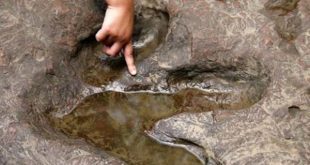 NASA has found a star that shoots huge balls of plasma
NASA has found a star that shoots huge balls of plasma
Space telescope of NASA “Hubble” discovered plasma balls about two times more of Mars, which shoots a dying star in the constellation Hydra.
Scientific paper on it appeared in the journal the Astrophysical Journal, briefly about it reports a site of NASA.
Balls was seen near the star “V Hydra” is a dying red giant at a distance of 1200 light-years from Earth. The mysterious “cannon fire” astronomers observe in this region every 8.5 years for the past 400 years.
Plasma balls are astronomers puzzle: previously it was not clear what leads the “plasma bullets” in motion. Now astronomers have made the first observation of several flares on the surface of a red giant, which led to the release of fairly large balls of plasma.
Telescope “Hubble” was aimed at the “V Hydra” for 11 years — from 2002 to 2013. Scientists were able to observe the chain of balls huge eruptions of plasma from the region. The temperature of each exceeded 9400 degrees Celsius — almost two times hotter than the surface of the Sun.
Also, the researchers observed the migration of clots that were “fired” in 1986 and moved away from the region is already 60 billion kilometers. They were moving so fast that it took only 30 minutes to cover the distance from the earth to the moon.
The new data allowed the scientists to hypothesize that “shoots” clots a companion star, invisible from Earth. By hypothesis the researchers, the star of invisible moving closer to the “V Hydra” every 8.5 years, absorb part of its substance, collects it and then throws out at great speed.
Astronomers also speculated that the mysterious bullet later become material for planetary nebulae. To confirm this assumption will allow further studies.









